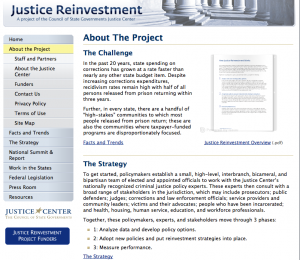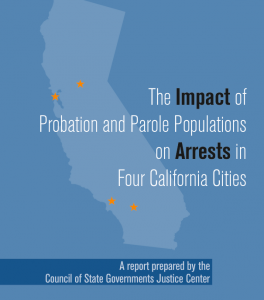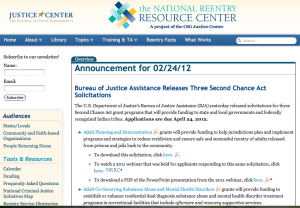 The Best Of: The following article, first published on May 14, 2012, describes the critical role the “Justice Reinvestment Initiative”, led by the PEW Center for the States and the Council of State Governments, have had on the prison reform movement.
The Best Of: The following article, first published on May 14, 2012, describes the critical role the “Justice Reinvestment Initiative”, led by the PEW Center for the States and the Council of State Governments, have had on the prison reform movement.
A recent Bureau of Justice Assistance (BJA) funded initiative is having an extraordinary effect on prison reform efforts in states across the nation. The “Justice Reinvestment Initiative” is a joint project of the PEW Center for the States, the Council of State Governmant and the Vera Institute They are providing assistance and support to states in an effort to reduce prison populations, establish non-prison penalties for non-violent offenses, increase good time/work time for prisoners, and generally encouraging states to return or keep prisoners in local jurisdictions, while reinvesting funds saved by these reforms in “alternatives to prison”. The Council of State Government’s National Reentry Resource Center has a Resource Project Page devoted to the “Justice Reinvestment Initiative” To access it, click on the page facsimile on the left.
According to information provided by BJA, “Justice Reinvestment is a data-driven approach to reduce corrections spending and re-direct savings to other criminal justice strategies that decrease crime and strengthen neighborhoods. They work closely with state and local policymakers to help design policies that manage the growth of the corrections system. They are finding ways to improve the availability of services, such as housing, substance abuse treatment, employment training, and positive social and family support for offenders returning to communities. They are also looking to reinvest savings generated from reductions in corrections spending to make communities safer, stronger, and healthier.”
What is incontrovertable, is that states are adopting the policy changes advocated and are passing ground-breaking reforms in many of the most conservative states in the nation (most recently Georgia, Oaklahoma, and Louisians; see articles in Facebook collumn on the right side of website). To access comprehensive information on what the “Justice Reinvestment Initiative” is doing in a listed state, just click on the state below, and you will be linked directly to National Reentry Resource Center information:



